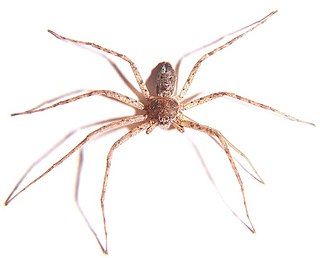
Philodromidae, also known as philodromid crab spiders and running crab spiders, is a family of araneomorph spiders first described by Tord Tamerlan Teodor Thorell in 1870. It contains over 500 species in thirty genera.
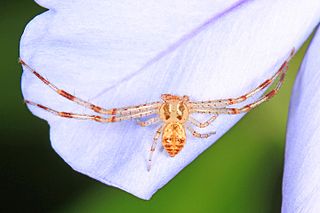
Misumenops is a common genus of crab spider with more than 50 described species.

Misumenoides is a genus of spiders in the family Thomisidae. Spiders in this family are commonly called "crab" or "flower" spiders.
Cândido Firmino de Mello-Leitão was a Brazilian zoologist who is considered the founder of Arachnology in South America, publishing 198 papers on the taxonomy of Arachnida. He was also involved with education, writing high-school textbooks, and contributed to biogeography, with essays on the distribution of Arachnida in the South American continent.

Chira is a genus of jumping spiders that was first described by George Peckham & Elizabeth Peckham in 1896. It is currently named after Rio Chira, a river in Peru, but the Peckhams originally called the genus Shira, later emended by Eugène Simon.

Cotinusa is a genus of jumping spiders that was first described by Eugène Louis Simon in 1900.

Hyetussa is a genus of the spider family Salticidae.

Castianeira is a genus of ant-like corinnid sac spiders first described by Eugen von Keyserling in 1879. They are found in Eurasia, Africa, and the Americas, but are absent from Australia. Twenty-six species are native to North America, and at least twice as many are native to Mexico and Central America.

Tmarus is a genus of crab spiders, comprising 227 species:

Psilochorus is a genus of spiders in the family Pholcidae.
P. silvestrii may refer to:

Metaltella is a genus of South American intertidal spiders first described by Cândido Firmino de Mello-Leitão in 1931. One species, Metaltella simoni, has been introduced to North America.
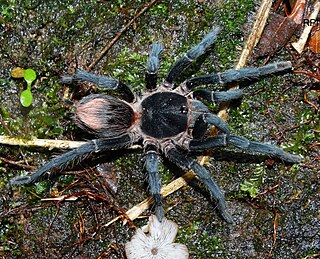
Homoeomma is a genus of South American tarantulas that was first described by Anton Ausserer in 1871. It is considered a senior synonym of Calopelma, Butantania, and of Cyclothoracoides. These tarantulas are usually quite small and usually burrow a few centimeters under a rock or log.
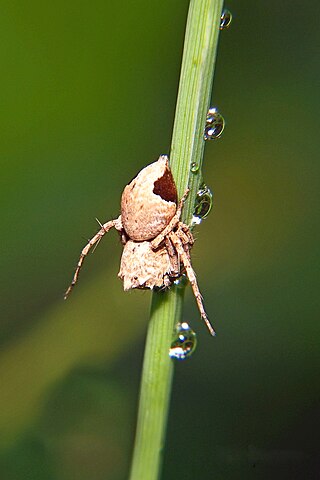
Hamataliwa is a genus of lynx spiders that was first described by Eugen von Keyserling in 1887.
Fageia is a genus of running crab spiders that was first described by Cândido Firmino de Mello-Leitão in 1929.
Pulchellodromus is a genus of running crab spiders that was first separated from Philodromus by J. Wunderlich in 2012.
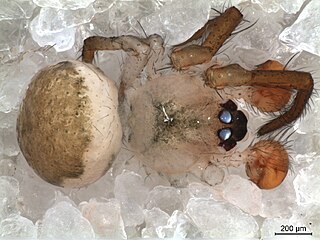
Onocolus is a genus of South American crab spiders first described by Eugène Simon in 1895. It is considered a senior synonym of Paronocolus.
Titidius is a genus of spiders in the family Thomisidae. It was first described in 1895 by Eugène Simon. As of 2017, it contains 20 species.

Xenoctenidae is a family of araneomorph spiders separated from Miturgidae in 2017.













